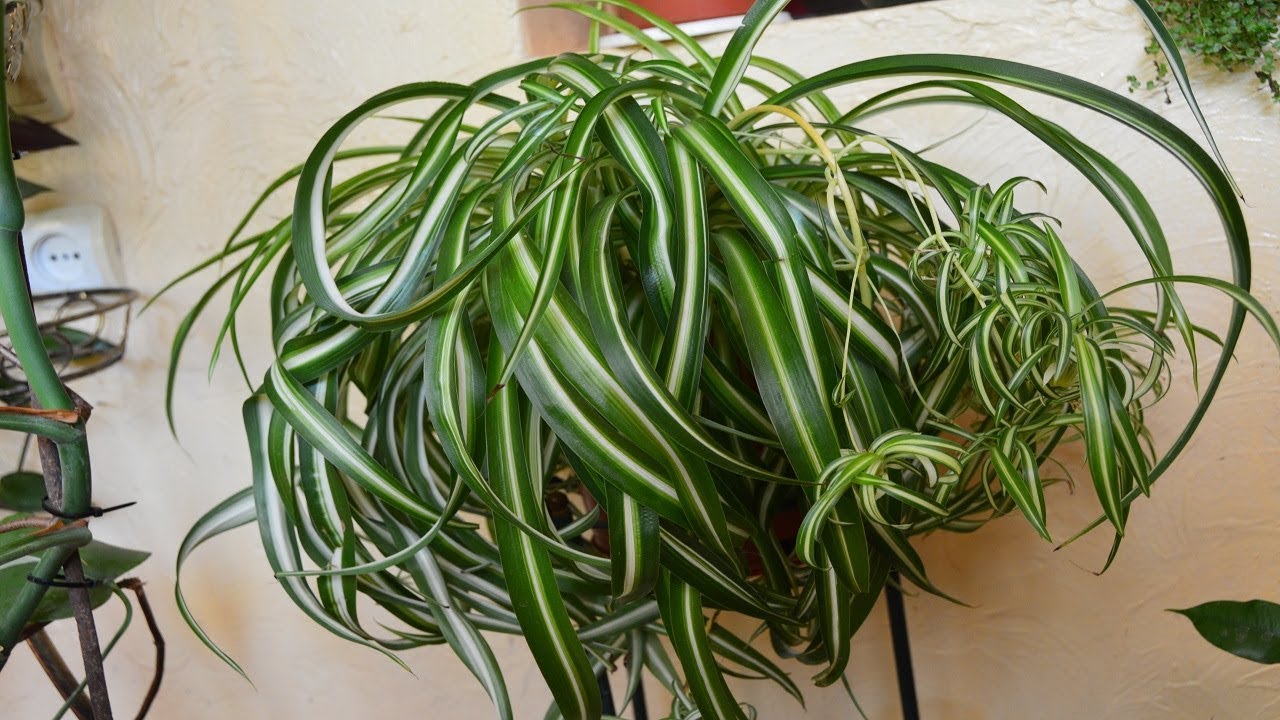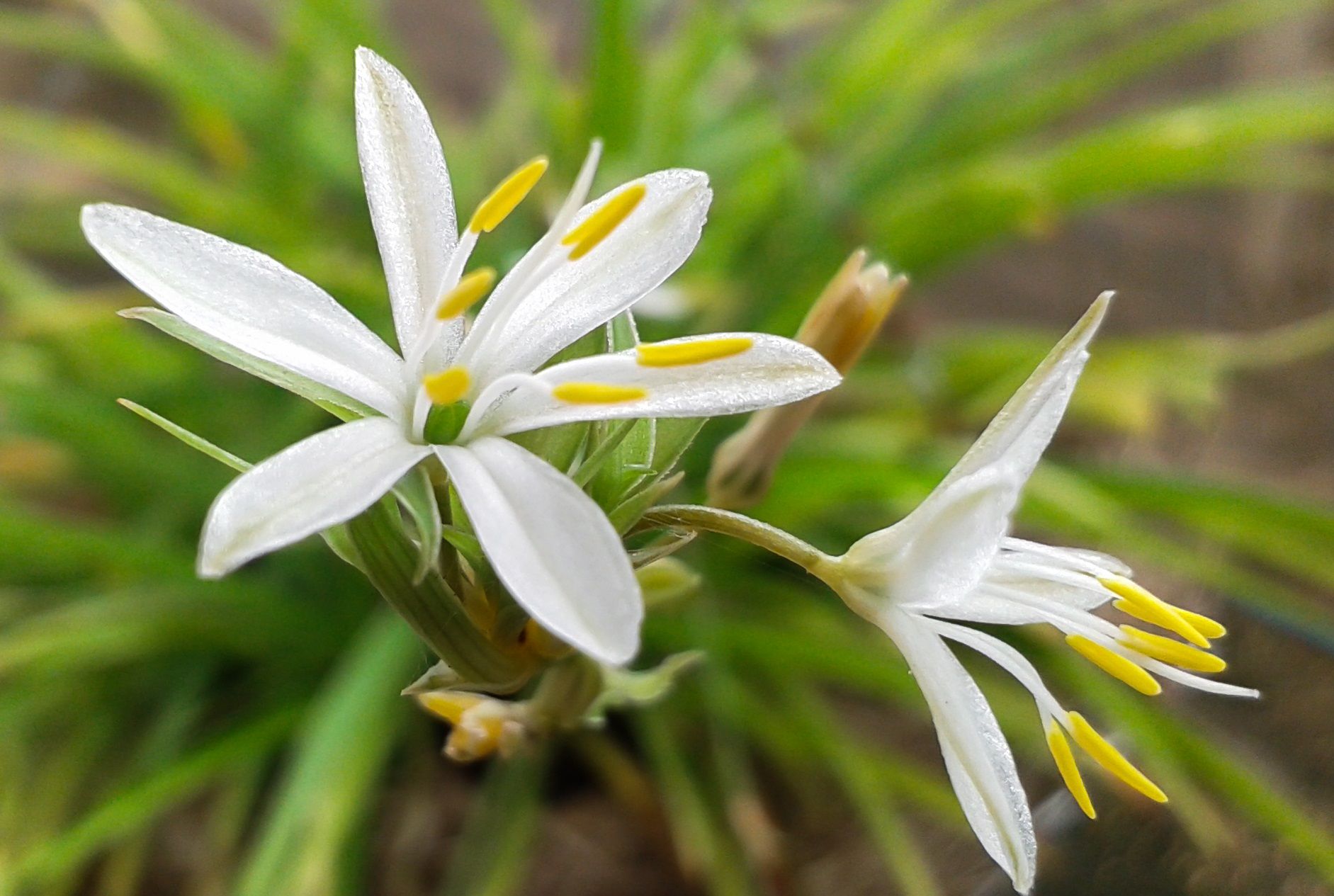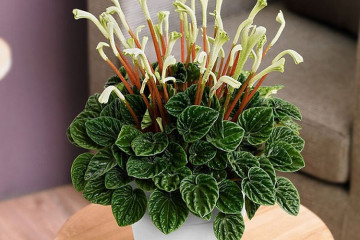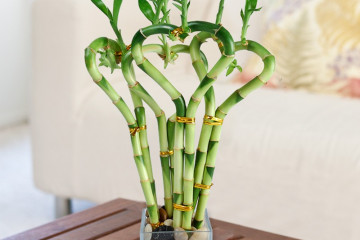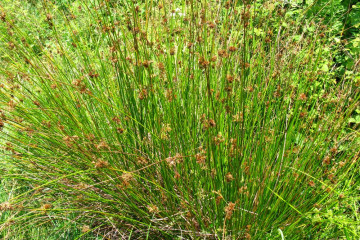Curly chlorophytum - home care
Content:
Chlorophytum belongs to herbal plants. An interesting feature is the color of the foliage and the fact that they begin to curl over time. On a long green leaf, a white stripe runs along the entire plate. The thick roots of the flower allow it to store the optimal amount of nutrients.
What does curly chlorophytum look like, which family does it belong to?
In indoor cultivation, the most popular varieties of chlorophytum are:
- Curly is a compact type of bush with curled leaves that begin to curl with good care.
- Crested - has long, narrow leaf plates, painted in bright green.
- Orange - the leaves are wider than the previous ones, have an oval shape and a dark green color.
Healing properties
The plant has a number of properties that are beneficial:
- cleans the air from dust and microbes;
- absorbs any chemical compounds in the air;
- gives off moisture if he gets enough of it himself;
- gives off a lot of oxygen.
Briefly about the history of appearance
Back in 1974, the first species of this plant were described. Found them in South Africa. In the second half of the 19th century, the bush was brought to Europe, after which the selection work began.
Features of caring for curly chlorophytum at home
Many gardeners confirm that caring for chlorophyte is a pleasure. In order for a flower to grow well, develop and give lush flowering, you should not neglect agricultural technology.
Temperature
Since chlorophytum is native to South Africa, the plant does not tolerate low temperatures and the presence of drafts. The temperature should not drop below +18 ℃. In winter, it is better to place a flower pot in a heated room on a warm windowsill.
Lighting
The flower loves diffused light and needs it. If the pot is placed in the shade, nothing will happen to the chlorophytum. The plant is often placed in hallways, stairwells and corridors.
Watering
The tropical origin determines the need for frequent and abundant watering at high room temperatures. The soil in the pot should not dry out, but always be kept moist.
Spraying
Chlorophytum bonnie of the curly variety loves high humidity. Periodically make the flower a light shower. This is especially true of such a situation when the pot is close to the radiators.
Humidity
The flower tolerates dry air in the house normally, with the exception of the summer season. During this period, it is imperative that the crown is sprayed daily with settled water.
Priming
The soil for planting a flower should be loose, well-permeable, but nutritious. A mixture of soil from under coniferous (deciduous) trees, coarse sand and humus is suitable.Do not forget about the drainage layer, which will retain moisture for a long time.
Top dressing
Bonnie loves chlorophytum fertilizing. Fertilizers need to be applied only in summer. Ready-made compositions for indoor deciduous plants are suitable. Frequency - once every 2 weeks.
When and how it blooms
The plant blooms in the warm season. The flowers are of no decorative value. The foliage looks more attractive than the inflorescences.
Types of flowers
On short peduncles, small white flowers are formed, which in their appearance are completely nondescript.
Flowering period
Chlorophytum blooms in the spring and summer. Blooming inflorescences can be observed throughout the warm season.
Changes in care during flowering
During the flowering period, the plant expends a lot of energy and nutrients. To replenish trace elements, they carry out regular feeding and watering. At this time, the bush begins to dry out especially quickly.
Pruning
By nature, the flower has a beautiful lush crown that does not require shaping. You can only trim the antennae and only if the cultivation of the culture is meant.
How curly chlorophytum reproduces
Curly chlorophytum can be propagated in a vegetative and generative way.
Germinating seeds
This breeding option at home is rarely used. It is mainly used by breeders in an attempt to develop new varieties. If you want to propagate a flower by seeds, you should adhere to the following scheme:
- seeds are placed in cheesecloth and immersed in water for germination;
- the substrate for planting must contain peat and sand;
- seeds are sown on the soil surface;
- the container is covered with a film and sent to a warm place;
- periodically the crops are aired;
- diving is performed after the appearance of several leaves on the seedlings.
Air layering
After flowering, rosettes are formed, which are used in flower cultivation. To increase the chances of rooting, the cut rosette is dipped in liquid. When the roots appear, the plants are planted in a pot of soil.
Dividing the bush
By dividing the bush, the culture can be propagated only when the plant reaches 3 years of age. The flower is carefully removed from the pot. The root is divided into several parts. The sections are lubricated with crushed coal. The resulting cuttings are planted in separate containers filled with soil mixture.
Transfer
The bush grows extremely quickly, an annual transplant is required. It is held only in the spring. The new pot should be 2 or 3 times the size of the previous one. The medium for planting is suitable for standard deciduous plants.
Possible growing problems and diseases
The most common problem with this shrub is drying out. To avoid problems, the flower is regularly watered, sprayed and ventilated.
Drops buds and leaves
The situation occurs due to the lack of nutrients and trace elements in the soil. It is worth revising the fertilizing schedule and the fertilizer formulations used.
Leaves turn pale
This can happen from excess moisture. Also, the flower most likely lacks light. Depleted soil and lack of trace elements often lead to blanching foliage.
The tips of the leaves dry
This suggests that the plant simply dries up. The earthy lump has not been watered for a long time. Additionally, it is worth paying attention to air humidity and spraying.
The lower leaves fall
Perhaps the soil was too flooded and the process of rotting of the root system began. In this case, the humidification should be stopped immediately.
Pests
Among the popular pests that bother chlorophytum are aphids, thrips, and scale insects.To begin with, use a soapy solution, if the product does not help, then you will have to use chemicals.
Signs and superstitions
Curly chlorophytum cleans not only the air, but also the energy in the house. The negative atmosphere in the house is eliminated after placing a pot with chlorophytum on the windowsill.
Chlorophytum is curly and its home care is suitable even for novice florists. Thanks to this plant, the air in the house will quickly be cleaned, and the interior will also be refreshed.
